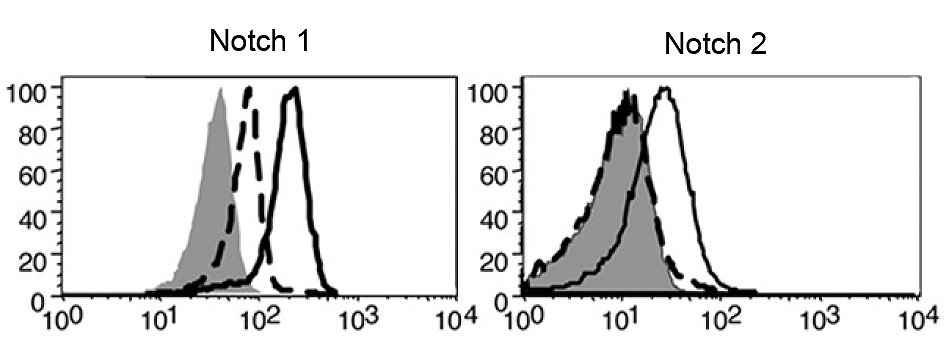Notch1 (mouse):Fc (human) (rec.)
AG-40B-0109
Protein IDQ01705
Product group Proteins / Signaling Molecules
Overview
- SupplierAdipoGen Life Sciences
- Product NameNotch1 (mouse):Fc (human) (rec.)
- Delivery Days Customer10
- CertificationResearch Use Only
- Concentration1 mg/ml
- Estimated Purity>95%
- Protein IDQ01705
- Protein NameNeurogenic locus notch homolog protein 1
- Scientific DescriptionNotch signaling pathway regulates many different cell fate decisions in both vertebrate and invertebrate species. There are 5 canonical Notch ligands in mammals: Jagged-1, Jagged-2, DLL1, DLL3 and DLL4. These can bind to the four Notch receptors Notch 1-4. It is important for pattern formation during development such as neurogenesis, angiogenesis or myogenesis and regulates T cell development and stem cell maintenance. Notch signaling is also involved in cellular processes through-out adulthood. Signaling via Notch occurs between neighbouring cells and both the receptor and its ligands are transmembrane proteins. - Protein. The extracellular domain of mouse Notch1 (aa 19-488) (12 epidermal growth factor-like (EGF) repeats) is fused at the C-terminus to the Fc portion of human IgG1. Source: CHO cells. Endotoxin content: 95% (SDS-PAGE). Notch signaling pathway regulates many different cell fate decisions in both vertebrate and invertebrate species. There are 5 canonical Notch ligands in mammals: Jagged-1, Jagged-2, DLL1, DLL3 and DLL4. These can bind to the four Notch receptors Notch 1-4. It is important for pattern formation during development such as neurogenesis, angiogenesis or myogenesis and regulates T cell development and stem cell maintenance. Notch signaling is also involved in cellular processes through-out adulthood. Signaling via Notch occurs between neighbouring cells and both the receptor and its ligands are transmembrane proteins.
- Storage Instruction-20°C,2°C to 8°C
- UNSPSC12352202

